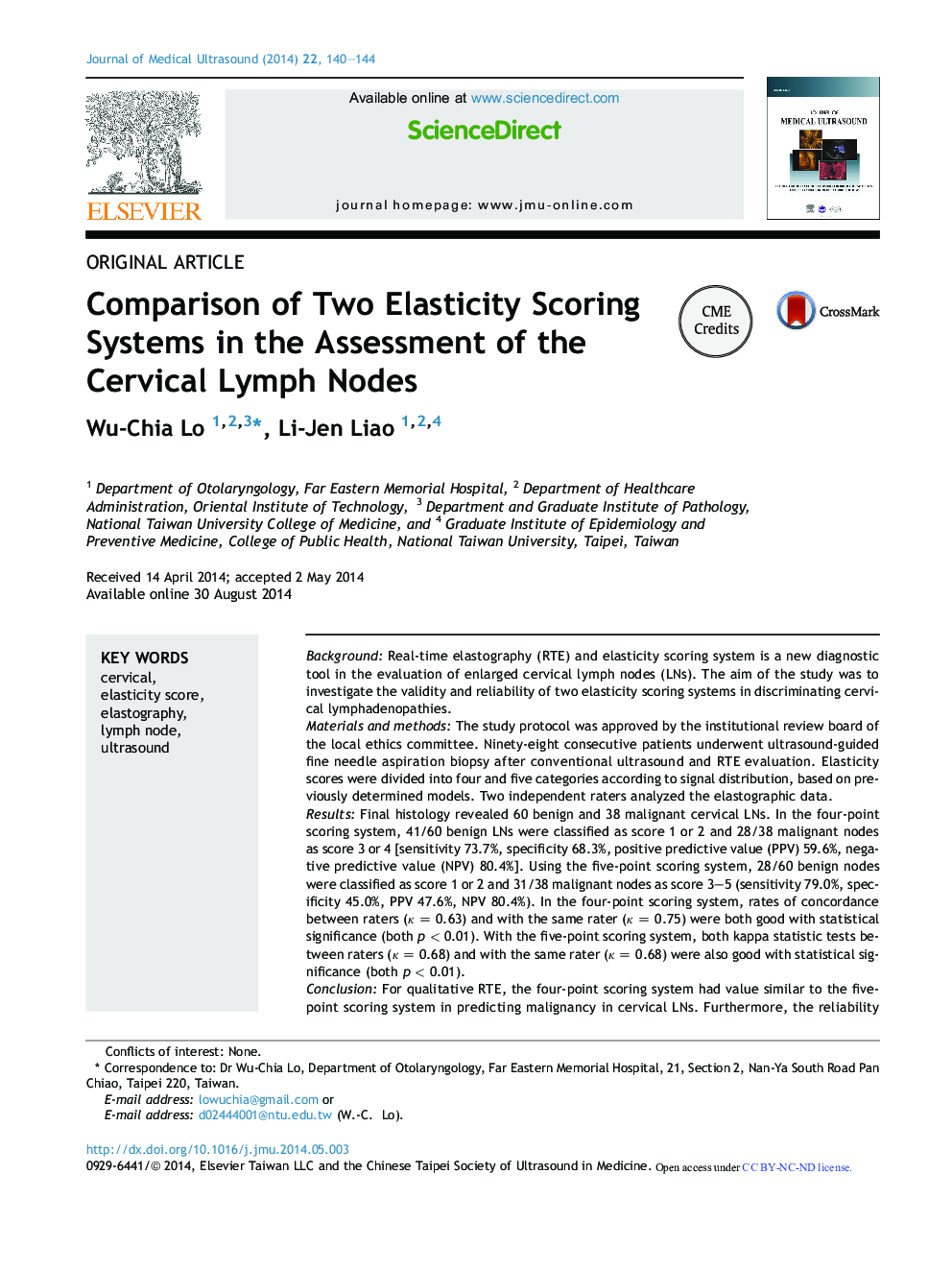| Article ID | Journal | Published Year | Pages | File Type |
|---|---|---|---|---|
| 4232983 | Journal of Medical Ultrasound | 2014 | 5 Pages |
BackgroundReal-time elastography (RTE) and elasticity scoring system is a new diagnostic tool in the evaluation of enlarged cervical lymph nodes (LNs). The aim of the study was to investigate the validity and reliability of two elasticity scoring systems in discriminating cervical lymphadenopathies.Materials and methodsThe study protocol was approved by the institutional review board of the local ethics committee. Ninety-eight consecutive patients underwent ultrasound-guided fine needle aspiration biopsy after conventional ultrasound and RTE evaluation. Elasticity scores were divided into four and five categories according to signal distribution, based on previously determined models. Two independent raters analyzed the elastographic data.ResultsFinal histology revealed 60 benign and 38 malignant cervical LNs. In the four-point scoring system, 41/60 benign LNs were classified as score 1 or 2 and 28/38 malignant nodes as score 3 or 4 [sensitivity 73.7%, specificity 68.3%, positive predictive value (PPV) 59.6%, negative predictive value (NPV) 80.4%]. Using the five-point scoring system, 28/60 benign nodes were classified as score 1 or 2 and 31/38 malignant nodes as score 3–5 (sensitivity 79.0%, specificity 45.0%, PPV 47.6%, NPV 80.4%). In the four-point scoring system, rates of concordance between raters (κ = 0.63) and with the same rater (κ = 0.75) were both good with statistical significance (both p < 0.01). With the five-point scoring system, both kappa statistic tests between raters (κ = 0.68) and with the same rater (κ = 0.68) were also good with statistical significance (both p < 0.01).ConclusionFor qualitative RTE, the four-point scoring system had value similar to the five-point scoring system in predicting malignancy in cervical LNs. Furthermore, the reliability was comparable in both scoring systems. For the purpose of simplified evaluation, we suggested using the four-point scoring system to rate the qualitative RTE in the future.
